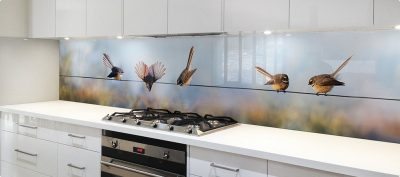
Wood is one of the most famous and oldest building materials. At first, it served only as a modest material for construction, but for a long time it also has had a much more diverse role – it can do anything, from construction to decor.
And there are few buildings that honor and embody wood as much as wooden barns. Their primary purpose was for agricultural purposes, while now only the sky is the limit for both transformations and use – from minimalist retreats all the way to luxurious residential spaces.
A bit of (r)evolution and a bit of architectural imagination and ingenuity do wonders.
Timber Barns – the Ageless Choice
The sturdy and functional timber frame barns date back to the early (colonial) American farming communities. They are characterized by durability, plus they are made to avoid metal parts by intertwining wooden beams. Even today, this technique inspires architects to substitute modern styles because of its strength and durability.
The most significant part of these barns, actually, is the exposed beams that create spacious areas. Vaulted ceilings, open floor plans, and rustic textures are always going to be ‘in’ because you cannot beat strength with pure aesthetics and appeal. And wood also gives you that warmth that every space needs.
According to the US Forest Service, forests in Pennsylvania and New York produce more timber than is harvested, ensuring sustainable production. Although exploitation is carried out, we should still congratulate them because they care about sustainability, which is also appreciated by architects who will always give priority to such wood in order to preserve nature – okay, and use the wood well for aesthetically attractive beams like in timber frame barns.
From Farm to Feature – Redefining Timber
Modern Design Transformations
The timber frame barns transformation trend actually began with the demand for eco-luxury homes, and Pennsylvania is a real source of that treasure, as much of the farmland still contains just such original barns that architects are turning into stunning vacation homes and rural retreats.
Another state that is rich in timber resources is Vermont. There, architects turn the original barns into boutique hotels and contemporary workspaces, which connect rural nostalgia filled with stories and modern comfort.
Essential Design Elements
Imagine this scene – lying on the bed or sitting in a comfortable armchair and looking out of a huge window that frames the beautiful endless natural beauty. Well, hello, can it get any better than that?! Another of the main features of these transformations is the open floor plans because they create multifunctional spaces. And all this is rounded off by a combination of restored wood and stone with a modern touch. Sounds like a fairy tale for relaxation.
Case Studies of Stunning Barn Transformation
Rural Escape in Maine
An old timber barn in Falmouth has been dramatically renovated through a deep energy retrofit that respects its historic character while creating a contemporary home. Instead of tearing it down, the owners chose to preserve iconic wooden features such as the catwalk among the original timber trusses and the floors made from WWII Liberty Ship hatches, showcasing the barn’s storied craftsmanship. A super-insulated, airtight envelope now ensures optimal energy efficiency, while new steel beams support both the catwalk and roof load. The result is a striking blend of heritage and modern sustainability, transforming a once drafty timber structure into an inviting, eco-friendly living space.
Translated the Vernacular of a 1788 Vermont Farm into Contemporary Design
Renovations to this historic property modernized the original farmhouse—master bedroom, kitchen, family room, and baths—while stabilizing its massive timber-framed dairy barn and converting a carriage barn into guest quarters. Clean, contemporary lines contrast beautifully with exposed beams, capturing the warmth of Vermont’s rustic heritage and the sweeping views of the Adirondacks.
Luck Ranch in Texas
Just outside Austin in Spicewood, Texas, Willie Nelson’s Luck Ranch is both a personal sanctuary and a vibrant event venue. Originally a film set built for the 1980s adaptation of Red Headed Stranger, the Old West-style town—complete with an Opry House and Saloon—was preserved and renovated by Cushing Terrell to stabilize the rustic timber structures while adapting them to modern standards. Today, Luck Ranch hosts Nelson’s annual Luck Reunion music festival, offering a magical backdrop that honors Willie’s vision and Texas roots.
The Future of Timber Frame Design
As previously stated, timber barns continue to inspire architects to produce (or transform) such beautiful works from simple, unassuming structures. This would be a great opportunity for sustainable housing development since this can both push boundaries and is, as the name suggests, sustainable.
Indeed, there’s a growing demand for “off the grid” retreats, making this a perfect opportunity for implementing trends like designing flexible and energy-efficient spaces. And through it all, timber construction remains a legacy with much promise in design that may even (as it now seems) have been ahead of the times.
Conclusion
We can look at this as a journey. And that journey of timber-framed barns from the simplest structures used for storage or for animals to luxurious residential and commercial spaces that take your breath away. A journey from the past’s ‘black swan’ simplicity to the present’s ‘white swan’ architectural marvels, preserving both stability AND quality.
Honoring the past while embracing the future and combining heritage with modern design while caring for the environment is a complete hit – both for those who want to escape the city just for a vacation and for those who wish for a life where every day they look out of the window at a true, living picture that is created by nature.









